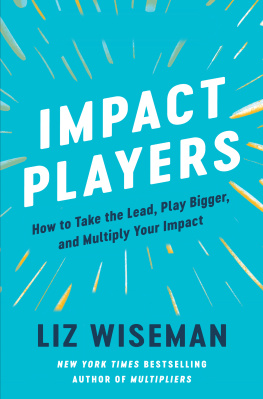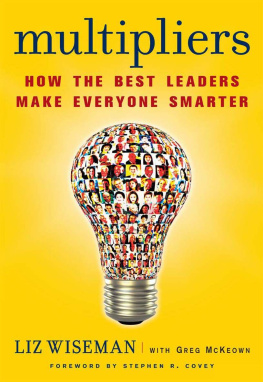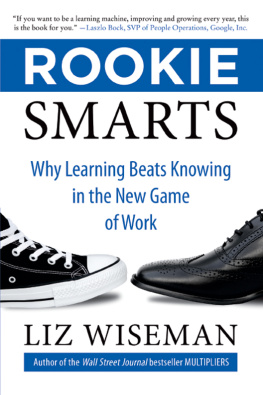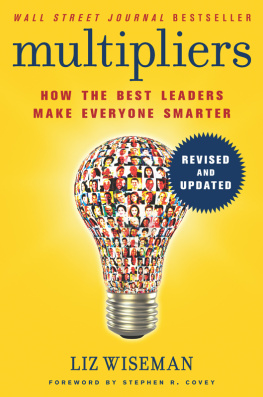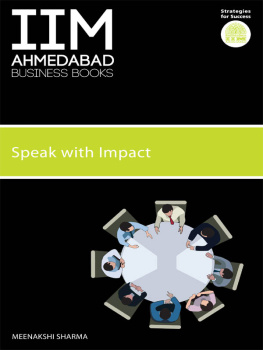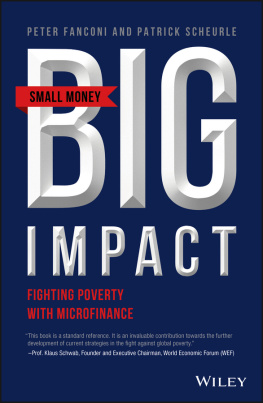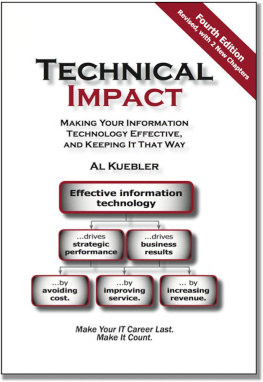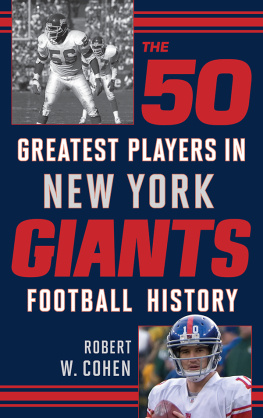For the three Joshes who brought joy and made work light during a tough year.
Contents
Some people are at their best in the most difficult circumstances; they make exactly the right move at the right moment and get results that land with impact. Those people are consistently tapped to lead, especially in critical moments.
You have probably seen this play out in sports: Its a crucial situation in a big game, and everything is on the line. The coach must decide whom to put into the game. There are a number of strong, capable athletes, but the coach taps one particular playerit may not be the strongest or the fastest player, but its the one who comes through in the clutch. Its the one who understands the gravity of the moment and will step up and get the job done. Its the one who can be counted on.
This scene also plays out daily in the workplace. Take this example: Jamaal, a district manager for a large retail chain, learns that the CEO is coming for a store visit. Unfortunately, the store manager will be gone that day, off on a long-planned vacation. The manager needs someone to step in and host this high-profile visit. The challenge is to showcase the stores achievements but also address the stores problems with candor, someone who is personable and confident but who wont use this moment to self-promote. He taps Joya, who, as anticipated, performs brilliantly. Its a win for Jamaal and the entire team. For Joya, representing the entire team is second nature. She grew up without a lot of support and knows the value of community. She said, My heart was pounding as I stood outside the store waiting to greet the CEO, but I stayed calm because this was about representing the store and my community to the best of my ability.
Some people seem to know how to make themselves valuable. They pay attention. They look for the most productive places to put their capability to use. They make things work, and they get the job done, even when the job gets difficult. They not only deliver results but send ripples of positive impact throughout their team and across the organization. Managers trust them when the stakes are high and turn to them in critical situations. They find a way to break through and make an impact while others are merely going through the motions.
For the first half of my career, I ran a corporate university and led talent development at Oracle. At that time, the corporate training world generally operated on the assumption that more is better, meaning when in doubt, train people and hope the situation improves. So we ran a lot of programs. We sent reports to various executives telling them how much training wed conducted. These reports were largely ignored, and the training directors felt continually frustrated that the executives werent more engaged. Training programs proliferated and everyone stayed busy, but not everyone or every program was impactful.
Ben Putterman, one of the training directors on my management team, took a different approach. The company was gearing up for a new product rollout, and he and several of his colleagues were preparing to brief the executive team on the status of product training for the field staff. Knowing that their past training reports hadnt provoked much of a reaction from the executives, they stepped back and asked: What do the executives really care about? When Ben put himself into the shoes of the divisional executives, he realized that he wouldnt really care about how much training people attended; he would care about who knew their stuff and how ready people were to work with customers to sell and support the new products.
He reoriented his entire approach around readiness instead of training. He and his staff introduced certification testing and actually encouraged people to self-study and test out of training if that allowed them to get up to speed faster. They reported on certification and readiness rather than training attendance. The executives started paying attention to the reports, pointing out where their data were incomplete and working with them to ensure accuracy. The senior executives were now actively engaged because Ben and his team were making it easier for them to do their jobs: to make the right investments, do the right thing for customers, and hold their organization and themselves accountable.
That approach, though perhaps commonplace today, was novel at the time, and it changed the business. While others stayed busy, Ben made an impact.
But this wasnt a onetime stroke of genius. Ben took setbacks in stride and treated problems as an opportunity to pivot and do something more valuable. It was easy to hand him the most challenging and vital work. Ben worked on my team for ten years and had a couple of nicknames for me: One was simply Boss and the other was Busy Lizzy, an apt description. It often made me wonder: Was I just going through the motions of my job, or was I having a real impact? Perhaps youve wondered why sometimes you make an impact at work, while other times your efforts get lost in the shuffle. Maybe youve been passed over for a leadership position and wondered why your colleague was tapped instead.
While all people bring capability and intelligence to their jobs, much as in a card game, some seem to play their hand better than others. They develop a reputation as the impact players within an organization. Managers know who these top players are, and they understand their worth. Leaders come to depend on them and give them a steady stream of high-profile assignments and new opportunities. Their peers know who they are as well. Everyone seems to understand the value they contribute and can see the positive influence of their work, and these people seem to move through their careers with impact and purpose.
I have been privileged to work with many of these superstars in my years as a corporate executive, and Ive witnessed their positive influence on teams and across entire organizations. Ive also seen how the impact of their work creates a more meaningful and fulfilling work experience for them. Yet Ive also noticed smart, talented people playing below their potential. Its hard to watch good people standing on the sidelines when you know they could be hitting home runs and winning championships.
Most people have seen this dynamictwo similarly capable individuals, both with talent and drive but whose work is having a markedly different level of impactbut not everyone understands what causes this difference. You might even have found yourself in one of these positions and wondered about the mindset and behaviors that set two equally capable people apart.
Corporate leaders sense the differences but often cant articulate them. They usually know who the superstars are and want more of them, but they struggle to explain what actually makes them different. Typically managers can articulate the more pronounced differences between their top and low performers; however, when it comes to their most influential, impactful players, the top of the top, there seems to be an ineffable quality about them. There is a certain je ne sais quoi in how they approach their jobs and an art form to the way they contribute.
Corporate HR and talent development professionals have tried to capture, understand, and communicate these differences using a variety of tools, for example, performance management systems meant to stratify employees into performance categories and provide feedback to help people improve, competency models to define critical skills for success, and statements of corporate values that prescribe the valued behavior. Yet most corporate values statements are too abstract to capture the nuance between behavior which is merely culturally acceptable versus truly impactful. On the other hand, the competency models tend to be too detailed; after all, few of us can remember dozens of critical skills and behaviors, let alone develop the skills before they become antiquated. These efforts dance around the right issues but miss the subtle distinction between a contribution that is good enough and one that is truly great. Further, these tools tend to overlook the powerful beliefs behind the behaviors.

